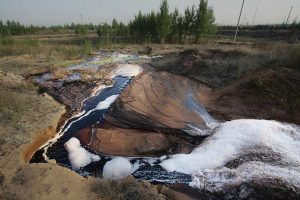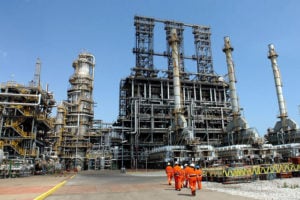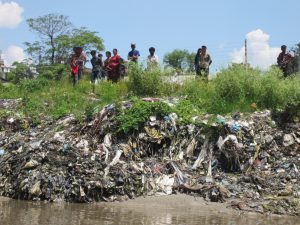China will from late 2016 ban industrial plants, paper mills and refineries that pollute the country’s water supplies, part of a wider plan to improve rivers, lakes, coasts and aquifers that have become chronically degraded following decades of breakneck economic growth.
Under the long-awaited ‘Ten-point water plan’, China’s cabinet said it aims to lift the share of good quality water, ranked at national standard three or above, to more than 70% by 2020 in seven major river basins including the Yellow and Yangtze.
The plan also wants at least 93% of urban drinking water supply to be at least ‘level three’ (i.e a drinkable standard) by the end of the decade, and calls for comprehensive supervision of water quality from source to tap by local governments, performance that will be reviewed by central government and made public.
The plan said impact on water supplies will become a key consideration on whether to permit industrial plants, adding that it will restrict building of petrochemical and metal refining along major rivers.
“We will fully consider the capacity of our water resources and environment, and determine city planning, project location, population and industrial output according to water reserves,” China’s cabinet said in comments reported by Reuters.
China’s government has already blocked industrial projects – such as coal gasification plants – on the basis they will use large amounts of water or pollute supplies.
The action plan will pay particular attention to small-scale paper factories, leather, printing and dying, coking, oil refineries, electronic plating, and pharmaceutical factories.
It is China’s “strongest action plan yet”, said Chang Jiwen, deputy director of resources and environment policy research at the State Council’s Development Research Center.
“This signifies China has begun to follow a high to mid-end development path” he added.
China’s environment ministry estimated the plan will boost GDP growth by 5.7 trillion yuan (US$91 billion) with a 1.9 trillion yuan benefit to environmental protection industries, prompting a big rise in shares of listed companies in the sector.
Around 60% of China’s underground water supplies are said to be polluted, while much of the drinking water in rural areas is unfit for human consumption because of pollution from fertilisers, pesticides and industrial activity.
Enforcing the proposals in China’s water plan will be critical to their success, as will ensuring clear responsibility for meeting targets at government level, say water experts.
Companies are also likely to have a clearer idea of the consequences if they continue to pollute water supplies, says Debra Tan, who heads China Water Risk, which analyses policy in the sector.
“On top of the impending water and wastewater tariff hikes, the wastewater discharge permits and new stricter industrial standards will hurt some industries. The price of water discharge permits traded has already risen sharply, as will fines.”
Tan adds: “All this combined with the new environmental law put into place earlier this year, mean the penalties are quite tough. Also, parties responsible for the pollution violations could go to jail for offences. It will mean it no longer pays to pollute.”
(For the CWR article on enforcement click here)
Last month, the China National Petroleum Corporation agreed to pay 100 million yuan (US$16 million) in compensation following claims its leaked benzene into the municipal water system in Lanzhou, northeast China.
A crackdown on corrupt officials who have encouraged polluting industries, may also mean that the new water plan bears sharper teeth as the government aims to deliver on its “war on pollution”.
John McGarrity wrote the english version of this article
A series of articles on China’s water crisis written by China Water Risk and republished by chinadialogue can be found through the following links:
Who is responsible for China’s water?:
https://www.chinadialogue.net/article/show/single/en/7839-Who-is-responsible-for-China-s-water-
China set to miss safe rural drinking water targets:
China’s drinking water faces scrutiny in 2015:







